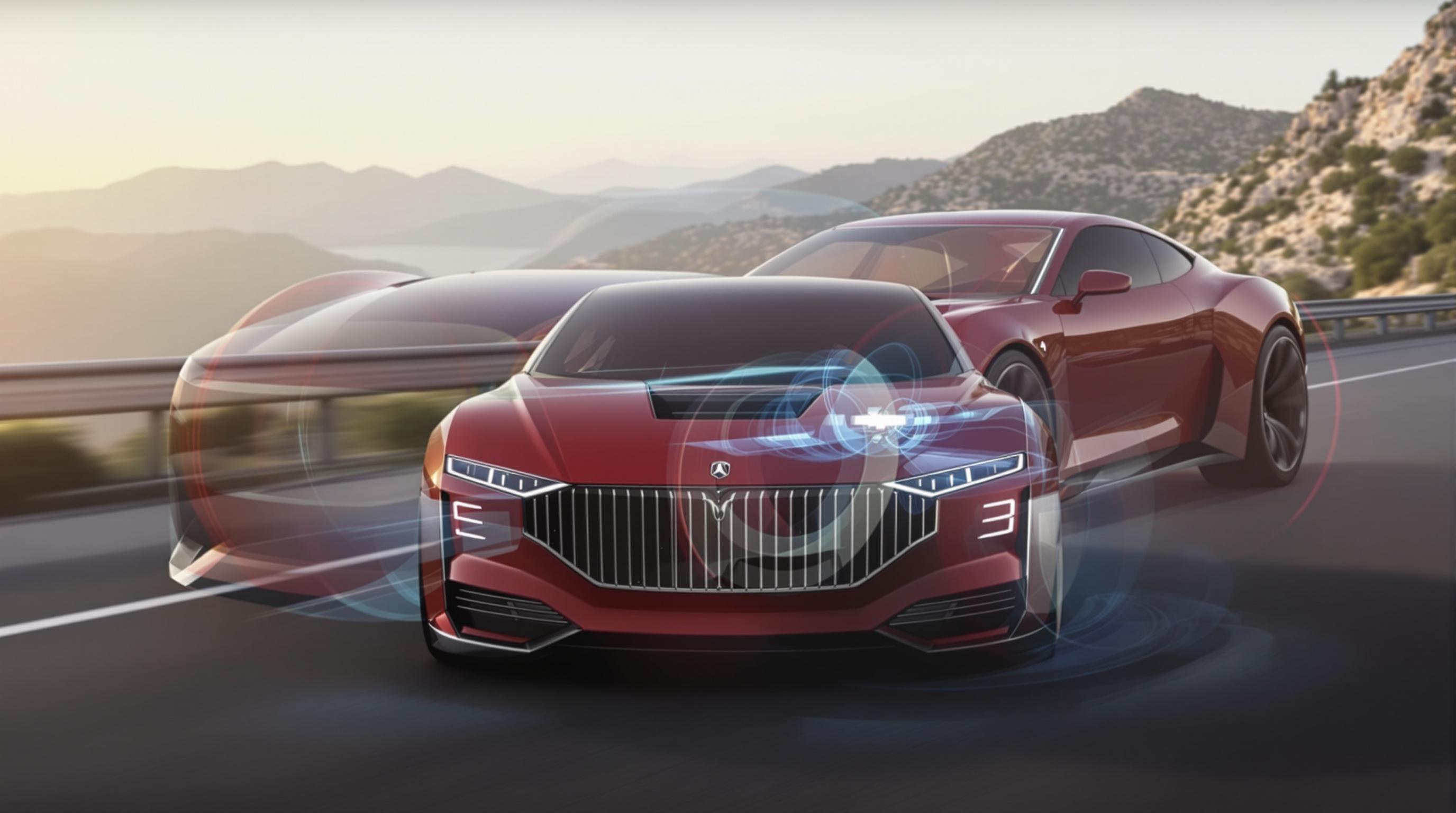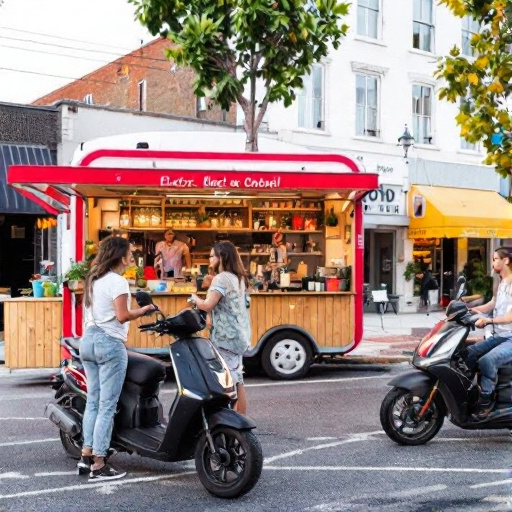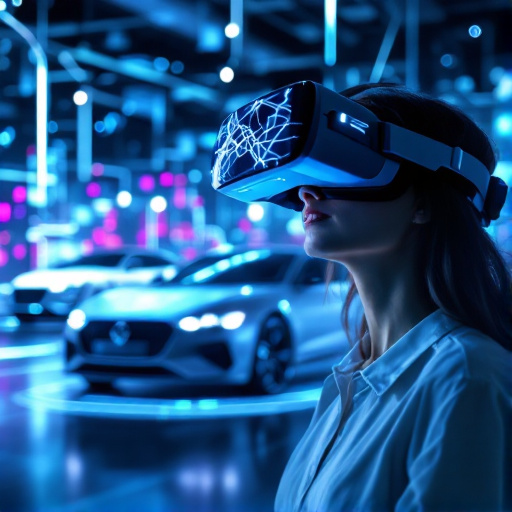Related Articles
- Charged Up! How Electric Vehicles are Reshaping Urban Wildlife Habitats and Biodiversity
- Navigating the Used Car Market: Uncovering the Secrets of 'As-Is' Sales for Savvy Buyers
- The Rise of Electric Car Pop-up Shops: A New Frontier for Urban Retail Experiences
- The Forgotten Art of DIY Car Maintenance: Rediscovering Skills in a Tech-Driven World
- Electric vs. Vintage: The Battle for Enthusiasts' Hearts in the Age of Latest Car Models
- The Rise of the 'Car Review Influencer': How Social Media is Shaping Auto Buying Decisions
Electric Vehicle Artistry: How Automakers are Turning Cars into Canvas for Cultural Expression
Electric Vehicle Artistry: How Automakers are Turning Cars into Canvas for Cultural Expression
Electric vehicles (EVs) have rapidly evolved from simple modes of transport into canvases for cultural expression, blending artistry with automotive innovation. This article explores how automakers and artists team up to utilize these vehicles for creative expression, showcasing case studies, statistics, and the cultural impact of this burgeoning trend.
The Intersection of Art and Automotive Engineering
Have you ever seen a car and felt an immediate emotional connection with it? Some people don’t just see an electric vehicle (EV) as a means of transport; instead, they view it as a blank canvas ready to express culture, identity, and social messages.
The marriage between art and automobiles isn’t entirely new, but it has accelerated immensely in the electric vehicle realm. According to Statista, the global electric vehicle market is projected to surpass $800 billion by 2027, and alongside this growth, a surge in creative expression is bubbling over. EVs are becoming cultural artifacts, touching on everything from social movements to personal identity, thus redefining what cars represent.
A New Era of Customization
In a world where individuality is celebrated, why should cars be left out? As automakers recognize the desires of younger, environmentally conscious consumers, customizable options for EVs have evolved. Tesla, for instance, allows owners to modify their vehicle’s exterior with wraps that illustrate everything from abstract art to personal tributes.
But it’s not just about personalization for the everyday driver. Artists like Felipe Pantone and Shepard Fairey have collaborated with brands to create street art-inspired vehicle designs, mixing the high-tech qualities of electric vehicles with vibrant, provocative images that invite viewers to rethink automotive aesthetics.
The Rise of the Mobile Mural
Take a stroll through any urban area, and you might just encounter a moving piece of art. As electric vehicles embrace the concept of the mobile mural, urban landscapes transform into galleries. For example, the “Electric Avenue” project in London features EVs adorned with vibrant designs by local artists, turning everyday commutes into cultural exchanges.
Think about it: every time a locally designed EV rolls down the street, it's not merely representing a brand; it speaks to the community’s ethos, creativity, and aspirations. Statistically speaking, cities that embrace such artistic initiatives see an uptick in tourism by as much as 30%, as cited in a report by the Cultural Planning Committee (2021).
The Influence of Sustainability
Environmentally friendly vehicles have invigorated discussions around sustainability in art. Artists today often feel a sense of responsibility; thus, they incorporate recycled and sustainable materials into their designs. The EV art scene is consequently more conscious, reflecting broader societal shifts towards sustainability.
For instance, a recent initiative called "Electric Canvas" invited artists to design murals specifically for EVs using biodegradable paints. This not only beautifies the automobile industry but also resonates with communities that value eco-conscious endeavors. It’s a win-win; our streets are adorned with eye-catching art while simultaneously promoting messages of sustainability!
Case Study: The BMW Art Car Project
When discussing the synergy of art and automotive engineering, the BMW Art Car Project is a prime example. Since 1975, this initiative has invited prominent artists, such as Andy Warhol and Jeff Koons, to transform BMW cars into mobile works of art. Each artist uses the car as a new medium, allowing audiences to experience their artistic vision in a unique way.
The latest installment involved the contemporary artist Cao Fei, whose designs incorporated elements of the digital realm, showcasing our transition into a technology-driven future. This project demonstrates that an electric vehicle can transcend traditional boundaries, becoming a platform for cultural dialogue and innovation.
Challenges in the Creative Automaking Process
Now, let’s be real: integrating art into the automotive industry isn’t without its challenges. Designers and automakers must balance aesthetic appeal with practical matters like durability, weather resistance, and overall vehicle performance. Plus, there’s always the risk of being too avant-garde for some customers’ tastes.
Furthermore, BCG research indicates that only 36% of millennials feel that automotive marketing aligns with their values, including artistry and sustainability. As the industry navigates this intricate dance between expression and utility, consumer feedback becomes vital for achieving success.
The Role of Technology
With the rise of 3D printing and augmented reality, artists and designers can now dream even bigger without the limitations of traditional practices. Imagine customizing an electric vehicle’s design via a mobile app—individualized art can be layered virtually and visually perceived through AR as a means of expressing one’s identity.
EVs can become dynamic representations of culture that change with the seasons or the artist’s current mood, embracing the fluid nature of creativity itself. In this context, electric vehicles become more than just cars; they evolve into a dialogue between art, technology, and the human experience.
Community Engagement Through Art
How can we forget the communal aspect of artistry? Many automakers have tapped into local communities for collaborative projects, utilizing local artists to create murals or wraps on their vehicles. This not only empowers local talent but also encourages a sense of ownership and pride within the community.
A striking example is the “Art in Motion” exhibit, where Chevy engaged local artists to design Chevy Bolt wraps that reflect the spirit and culture of various neighborhoods in Detroit. Such initiatives foster stronger community ties and promote local art while capturing and celebrating those unique narratives.
Bringing Light to Social Issues
Art serves as a powerful platform for advocating social change. Electric vehicles, driven by conscious consumers, can amplify these messages. One compelling example is the “Riders Against Racism” campaign, initiated by a collective of artists who decorated EVs with strong social justice messages to create visibility for crucial issues.
This project illustrates how art and technology come together to inspire conversation. A single vehicle adorned with evocative imagery passes through cities and towns, igniting discussions that might otherwise remain dormant. Automakers that embrace this potent form of cultural expression position themselves as allies in the fight for change.
The Aesthetic Appeal of Electric Vehicles
It must also be noted that EVs inherently encompass sleek, modern designs that can be seen as forms of art themselves. Many models are engineered not just for aerodynamics but for visual impact. From the curves of a Tesla to the striking design of a Lucid Air, automotive designers face the challenge of creating aesthetically pleasing vehicles.
The appeal of these designs can be enhanced through collaborative efforts with artists who can showcase cultural motifs or avant-garde themes that resonate with society’s present struggles and triumphs. As the poet Robert Frost once said, “There are two roads you can go by,” and in the landscape of EV artistry, the possibilities are limitless.
The Future: Predictions for EV Artistry
So where is this trend headed? Are we on the brink of a creative automotive revolution? It’s likely that as younger generations continue to embrace electric vehicles, more automakers will prioritize artistic collaborations, community involvement, and artistic innovation.
The integration of art into the EV industry is set to continue expanding, allowing brands to better engage with consumers, particularly those between 16 and 35. With artists becoming more aware of EV capabilities, we can soon anticipate a plethora of innovative designs, from interactive elements to fully digitized art displays. Who knows? In the future, we may witness car shows that feel less like stale showcases and more like dynamic art festivals!
Final Thoughts: A Culture on Wheels
Artistry in the electric vehicle scene is invaluable—turning cars into vibrant canvases for cultural expression. This unique amalgamation of automotive engineering and artistic vision not only enhances our urban landscapes but also challenges societal norms and expectations.
As we drive towards a more sustainable future, let’s celebrate the innovators—both artists and automakers—who are reshaping how we perceive mobility. So, the next time you see an electric vehicle on the road, take a moment to reflect on its story; it might just be a mobile representation of culture, community, and creative expression rolling right by you.




